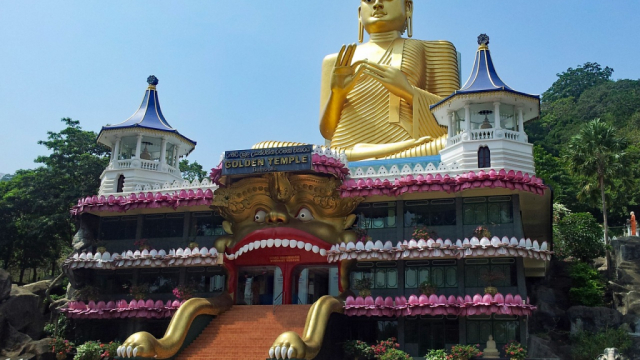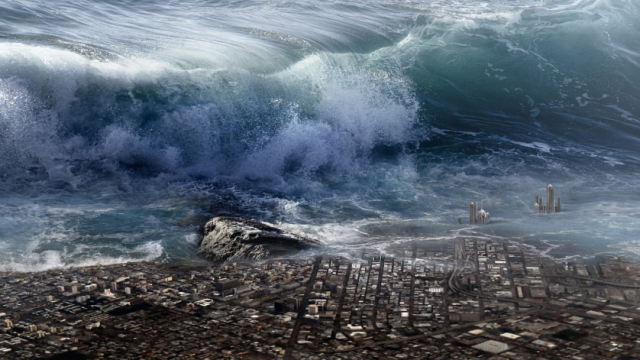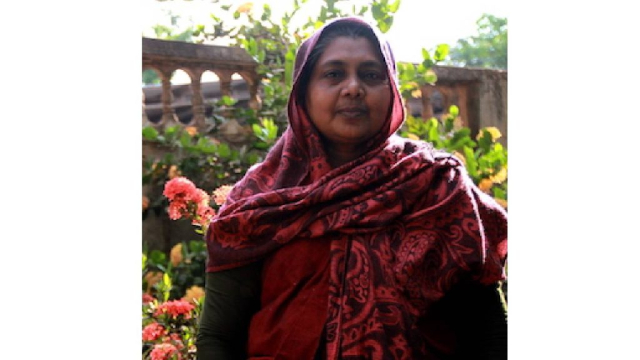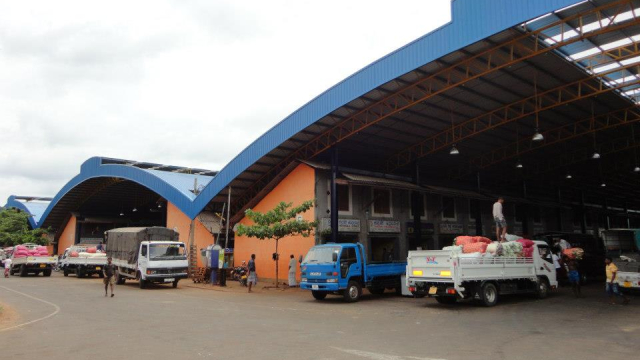Rosalind Rosy Senanayake: A Journey from Miss World 1985 to Public Service

In the realm of beauty pageants, where glamour meets grace, Rosalind Rosy Senanayake carved her name in history. Rosy Senanayake Crowned as Miss World in 1985, her story extends far beyond the glitz of the stage, painting a portrait of resilience, dedication, and service to her country, Sri Lanka. Early Life and Entry into Miss World Born on January 17, 1961, in Colombo, Sri Lanka, Rosy Senanayake exhibited her charm and elegance from a young age. Her foray into the world of pageantry began as she participated in local beauty contests. Her captivating presence and intelligence paved her way to the Miss Sri Lanka title, marking her entry into the prestigious Miss World competition. The Miss World Triumph Senanayake’s journey to the Miss World title in 1985 was more than a victory for herself; it was a moment of pride for her nation. With grace, poise, and a heartwarming smile, she captured the attention of the world, showcasing the beauty and cultural richness of Sri Lanka. Her win was celebrated as a symbol of Sri Lankan excellence and elegance. Beyond the Crown: A Journey in Public Service While the Miss World crown solidified her place in the annals of beauty pageants, Rosy Senanayake’s true calling lay in serving her country. She ventured into politics, driven by a passion for social change and a desire to make a tangible difference in the lives of her fellow citizens. Her political career was marked by dedication and service. Senanayake held various positions, including Deputy Minister of Child Development and Women’s Affairs, demonstrating a fervent commitment to empowering women and advocating for children’s rights. Her initiatives aimed to uplift underprivileged communities, focusing on education, healthcare, and socio-economic development. Philanthropy and Advocacy Work Outside the political sphere, Rosy Senanayake continued her philanthropic efforts. She remained actively involved in charitable causes, working towards the betterment of society. Her endeavors spanned diverse areas, from championing environmental conservation to supporting initiatives promoting women’s empowerment and healthcare access. Legacy and Impact Senanayake’s legacy extends beyond her achievements in beauty pageants and politics. Her unwavering dedication to public service and philanthropy serves as an inspiration, encouraging individuals to use their platforms and abilities to create positive change in the world. Conclusion Rosalind Rosy Senanayake’s life journey embodies the essence of grace, resilience, and service. From the heights of winning the Miss World title to her impactful contributions in politics and philanthropy, she remains an iconic figure in Sri Lanka, leaving an indelible mark on both the pageant world and the realm of public service. Her story stands as a testament to the transformative power of passion and dedication in making a meaningful difference in society.
Poya Day In Sri Lanka

Poya Day is a monthly Buddhist holiday in Sri Lanka that is celebrated on the full moon day of each month. As 70% of Sri Lankans are Buddhist, most of the population celebrates each Poya Day as of religious significance. The fact that the moon is largest and brightest when it is full is the rationale behind full moons being occasions for celebration. On Poya Days, Sri Lankan workers are legally guaranteed a paid off-work day, unless they are paid time and a half by their employer during Poya Day hours. Most businesses will be closed, and alcoholic beverages and meat are not allowed to be sold until the Poya is over. There are around a dozen Poya Days every year, in conformity with the Buddhist lunar calendar and moon-phase marking system 1. Each full moon, and each corresponding Poya Day, has its own name and specific events it is meant to commemorate . For instance, Bak Full Moon Poya Day commemorates the second visit of The Buddha to Sri Lanka which took place in the fifth year of his Supreme Enlightenment . If you’re planning to visit Sri Lanka, it’s worth experiencing Poya Day celebrations. You can witness the religious rituals and customs of the locals and enjoy the serene and peaceful atmosphere of the temples.
“Anjali Derana Dream Star: The Rising Star of Derana Dream Star”

Derana Dream Star is a popular singing competition in Sri Lanka. The show has been running for several seasons and has produced many talented singers. Anjali Herath is one of the contestants who participated in the 11th season of the show. She is a young and talented singer who has won the hearts of many with her melodious voice. Anjali Herath’s performance in the show was exceptional. She sang a song called “Kimada Sumihiriye” which means “How beautiful is the smile” in English . Her performance was well received by the judges and the audience alike. She has a unique voice that is both soothing and powerful at the same time. Anjali Herath’s journey in the show was not an easy one. She had to compete with many other talented singers to reach the finals. However, her hard work and dedication paid off when she was declared the winner of the 11th season of the show. Her victory was well deserved and she has become an inspiration to many young singers in Sri Lanka. Anjali Herath’s success in the show has opened many doors for her. She has been invited to perform at many events and has become a popular figure in the Sri Lankan music industry. Her fans are eagerly waiting for her next performance and are excited to see what the future holds for this talented singer. In conclusion, Anjali Derana Dream Star is a great platform for young and talented singers to showcase their skills. Anjali Herath is a shining example of what hard work and dedication can achieve. Her victory in the 11th season of the show has made her a household name in Sri Lanka and has inspired many young singers to follow in her footsteps.
2004 Tsunami Remembering: 5 Essential Facts

The devastating Indian Ocean tsunami of 2004 remains etched in our collective memory as one of the deadliest natural disasters in recorded history. Triggered by a powerful undersea earthquake, it unleashed a catastrophic series of waves that wreaked havoc across numerous countries bordering the Indian Ocean. Here are five crucial facts that shed light on the enormity and impact of this tragic event: 1. Magnitude and Epicenter in 2004 Tsunami The earthquake that instigated the tsunami occurred on December 26, 2004, off the western coast of northern Sumatra, Indonesia. With a staggering magnitude of 9.1 to 9.3, it ranks as one of the most powerful quakes ever recorded. The epicenter lay beneath the Indian Ocean, approximately 160 kilometers (100 miles) west of northern Sumatra. 2. Devastating Waves in 2004 Tsunami Following the seismic rupture, colossal waves radiated outward in all directions, reaching heights that surpassed 100 feet (30 meters) in some areas. The tsunami waves, traveling at incredible speeds of up to 500 miles per hour (800 kilometers per hour), slammed into the coastlines of 14 countries, causing widespread destruction. 3. Enormous Human Toll in 2004 Tsunami The human toll of the 2004 tsunami was catastrophic. Over 230,000 people lost their lives across the affected nations, and countless more suffered severe injuries and displacement. Indonesia bore the brunt of the disaster, accounting for the majority of casualties, followed by Sri Lanka, India, Thailand, and several other countries. 4. Global Response and Humanitarian Aid The scale of the tragedy prompted an unprecedented global humanitarian response. Countries, international organizations, and countless individuals rallied to provide aid and support to the affected regions. Relief efforts included medical assistance, food and water supplies, infrastructure rebuilding, and long-term rehabilitation programs aimed at helping communities recover and rebuild their lives. 5. Environmental and Societal Impact Beyond the immediate loss of life and infrastructure damage, the 2004 tsunami had long-lasting environmental and societal consequences. Coastal ecosystems were disrupted, and the livelihoods of thousands who depended on fishing and tourism were severely affected. The disaster also highlighted the importance of early warning systems and disaster preparedness in vulnerable regions prone to such natural calamities. Reflecting on Lessons Learned from 2004 Tsunami The 2004 Indian Ocean tsunami serves as a somber reminder of the unpredictable and destructive power of natural disasters. It underscored the necessity for improved disaster preparedness, early warning systems, and international cooperation to mitigate the impact of future catastrophes. While significant progress has been made in disaster risk reduction since then, the event continues to influence policies and strategies aimed at ensuring the safety and resilience of communities worldwide. As we remember the lives lost and the widespread devastation caused by the 2004 tsunami, let us honor their memory by striving for a more resilient and prepared world in the face of natural disasters.
Protecting Sri Lanka’s Coconuts from White Flies

A smart student from Kurunegala Defence Services College found a great way to stop white flies from hurting Sri Lanka’s coconut trees. Thushara Sewwandi Basnayake, who is in 11th grade, made a trap that works really well. She even won gold medals in contests for making such a clever thing. Her trap tricks the white flies by using what they like: the color yellow and the smell of coconut trees. Basnayake made something that smells like the tree and looks yellow to attract the pests. She figured out that these flies are most active from 3 to 4 in the morning. So, she made her trap even smarter by adding solar lights. These lights shine on a sticky sheet with a special substance. When the flies come buzzing around, they get stuck. This cool idea could help stop these flies from causing big problems for Sri Lanka’s coconut farms. It’s a good solution because it doesn’t use harmful chemicals that hurt the environment. It might make things better for the country’s coconut industry in the long run. People have noticed how awesome Basnayake’s invention is. She got gold medals in competitions because of how smart and creative her trap is.
Piumi Hansamali: Queen in Sri Lanka’s Digital World

Piumi Hansamali is someone making a big splash in Sri Lanka’s online world. She’s known for her good looks and for talking openly about important stuff. She isn’t afraid to share her thoughts, especially about how women are treated and what’s happening in society. Sometimes, what she says gets people talking, even if it makes some folks a bit upset. But here’s the thing: Piumi’s not just about photos and glamour. She’s using the internet to talk about things that really matter. She’s bringing up topics that often don’t get much attention. Sure, her way of speaking out has led to disagreements. People have different opinions about her. But many young people are supporting what she’s doing. They like that she’s using the internet to talk about things that need to change. Piumi’s journey is a reminder that one voice online can start big conversations. She’s using her platform to talk about things that many people don’t usually discuss openly. She’s trying to make things better by speaking up about important issues. In Sri Lanka’s digital world, Piumi Hansamali is showing how speaking out can make a difference. She’s using the power of the internet to highlight topics that need attention and encouraging everyone to think about them. Her journey teaches us that one person’s voice, especially on the internet, can create a big impact. Piumi’s goal is clear: she wants to make a positive change by starting conversations that matter. Piumi’s fearless approach to discussing crucial issues online reflects the power of one individual’s voice in shaping conversations and driving positive change in Sri Lanka’s digital sphere. Image Source – colombotelegraph Newsfirst Pxfuel
How Crocs Rule: Unveiling the Fascinating World of Crocodiles Curious crocodile behaviors..

Ready to dive into the wild world of crocodiles? These ancient reptiles are more than just powerful jaws and menacing appearances. From their exceptional parenting skills to their incredible regenerative abilities, crocodiles have a repertoire of fascinating traits that set them apart in the animal kingdom. Let’s explore these incredible creatures and uncover the intriguing, often surprising, facts that make them both fearsome and utterly captivating. High-Pressure Jaws: Crocodiles have incredibly powerful jaws. Their bite force is one of the strongest in the animal kingdom, exerting pressure of about 3,700 pounds per square inch. That’s stronger than that of a great white shark! Advanced Parenting: They’re excellent parents. Crocodile mothers are attentive and protective. They carefully guard their nests, sometimes even carrying their hatchlings in their mouths to water. Despite their ferocity, they display nurturing behaviors towards their young. Cry Baby Crocs: Baby crocodiles communicate with each other even before they hatch. They make specific noises inside their eggs, enabling the unhatched siblings to synchronize their hatching. This synchronized hatching helps them overwhelm potential predators. Saltwater Giants: The saltwater crocodile is the largest living reptile in the world, capable of reaching lengths of up to 23 feet and weighing over a ton. They’re powerful swimmers and can travel long distances, even venturing into saltwater environments. Advanced Healing: Crocodiles have impressive regenerative abilities. They can heal from serious injuries, including the loss of limbs, and often avoid infections, thanks to their strong immune systems. Temperature-Dependent Gender: The temperature at which crocodile eggs are incubated determines the gender of the hatchlings. Higher temperatures generally lead to more females, while lower temperatures tend to result in more males. Survival Skills: Crocodiles are survivors from ancient times, existing relatively unchanged for millions of years. They’ve adapted to various environments, showcasing their resilience and evolutionary success. Fishermen’s Friends: In some areas, fishermen have learned to live and fish alongside crocodiles. They toss them scraps from their catch, and the crocodiles help by scaring away or consuming predators that might disturb the fishermen. These creatures certainly have an intriguing mix of incredible capabilities and peculiar behaviors!
Juwairiya Mohideen: From Displacement to Defiance – Championing Human Rights in Sri Lanka”

Juwairiya Mohideen ‘s journey is a testament to resilience and unwavering activism. Forced to leave her home during a tumultuous time in Sri Lanka’s history, Juwairiya’s path from displacement to activism is remarkable. Despite facing internal displacement, Juwairiya emerged as a beacon of hope, advocating tirelessly for marginalized individuals, especially women and children. Her founding of the Muslim Women’s Development Trust and involvement with the Women’s Action Network illustrate her commitment to fostering a more equitable society. Her focus on combating gender-based violence and challenging discriminatory practices within Muslim marriage laws showcases her dedication to driving societal and legal change. Moreover, her efforts toward reconciliation between Muslim and Tamil communities reflect a profound commitment to unity and social harmony. The Ginetta Sagan Award, established to honor human rights advocates, recognizes Juwairiya Mohideen’ ‘s courage and tireless efforts. This prestigious award not only acknowledges her contributions but also provides crucial support for her ongoing work. More significantly, the award represents Amnesty International’s commitment to championing women human rights defenders who bravely uphold the rights of the most vulnerable. It serves as an inspiration, highlighting the essential role women play in advancing human rights globally. Juwairiya Mohideen’s journey, from displacement to becoming an indefatigable activist, inspires individuals worldwide. Her story emphasizes the vital role determined individuals like her play in advocating for justice, equality, and human rights in societies grappling with turmoil and injustice.
China’s Focus on Extending Economic Corridor to Sri Lanka: Strengthening Ties and Trade Initiatives

The extension of the China-Myanmar Economic Corridor to Sri Lanka takes precedence in China’s plans, as conveyed by Chinese President’s Special Envoy, State Councillor Shen Yiqin, during her meeting with Sri Lankan President Ranil Wickremesinghe in Colombo on Monday (20). President Wickremesinghe emphasized the readiness of Belt & Road initiative participant countries, like Sri Lanka, to enter the second phase, aiming for a more substantial economic impact. Sri Lanka’s steps to access the Regional Comprehensive Economic Partnership (RCEP) were highlighted, emphasizing the commitment to maintain the Indian Ocean as a geopolitically neutral and peaceful navigation zone, as stated by the President’s Media Division. The meeting underscored the mutual agreement to expedite the implementation of the China-Sri Lanka Free Trade Agreement, as reported by the President’s Media Division in an official statement. Shen Yiqin reiterated China’s enduring support for Sri Lanka and emphasized her dedication to bolstering the ties between both nations. The courtesy call between the Special Envoy of the Chinese President, State Councillor Shen Yiqin, and President Ranil Wickremesinghe primarily aimed to strengthen tourism and trade relations between the two countries. President Wickremesinghe expressed gratitude for China’s support, particularly acknowledging their assistance in Sri Lanka’s debt restructuring program. He extended sincere thanks to the Chinese President and government for their invaluable support in this endeavor. Furthermore, President Wickremesinghe highlighted Sri Lanka‘s interest in enhancing collaboration with China in tourism, sports, and agriculture. He also emphasized the investment readiness of both the Hambantota Port and Port City, signaling opportunities for potential investors, as per the President’s Media Division. Source: President’s Media Division
Dambulla Dedicated Economic Center Sri Lanka

Introduction to Dambulla Economic Center Sri Lanka Nestled in the heart of the captivating island nation of Sri Lanka, the Dambulla Dedicated Economic Center stands as a testament to the country’s economic vitality and commitment to fostering trade and commerce. Strategically located in the central province, this center has emerged as a pivotal hub for agricultural produce, commerce, and economic development in the region. Pillar of Agricultural Trade The Dambulla Dedicated Economic Center serves as a focal point for the trade of agricultural goods, playing a vital role in connecting farmers, vendors, and consumers. Its sprawling marketplace offers an impressive array of fresh fruits, vegetables, spices, and other agricultural produce sourced directly from local farmers and growers. This hub serves as a lifeline for the agricultural community, providing a platform for market access and fair-trade practices. Modern Facilities and Infrastructure Equipped with modern facilities and state-of-the-art infrastructure, the economic center ensures smooth operations and efficient trade transactions. Its well-designed layout and amenities cater to the needs of vendors and buyers alike, creating a conducive environment for commerce to thrive. Empowering Local Communities One of the center’s significant impacts lies in its contribution to empowering local communities. By providing a platform for small-scale farmers and producers to showcase their products on a larger scale, the economic center promotes inclusivity and economic empowerment. Additionally, it facilitates interactions between farmers and larger distributors, enabling fair pricing and better market access. Driving Economic Growth The Dambulla Dedicated Economic Center serves as an engine for economic growth, not only in the central province but also in Sri Lanka as a whole. Its role in facilitating trade and commerce bolsters the country’s economy while promoting sustainable agricultural practices and supporting livelihoods. Tourist Attraction and Cultural Significance Beyond its economic significance, the center attracts tourists fascinated by the vibrant atmosphere and the opportunity to witness the bustling trade activities. Visitors get a firsthand glimpse into Sri Lanka’s rich agricultural heritage and cultural diversity, making it a must-visit destination for travelers exploring the region. Conclusion The Dambulla Dedicated Economic Center stands tall as a symbol of economic progress, fostering trade, empowering local communities, and contributing significantly to Sri Lanka’s growth story. As it continues to evolve and innovate, this center remains a key player in the nation’s economic landscape, driving sustainable development and prosperity for all involved.
